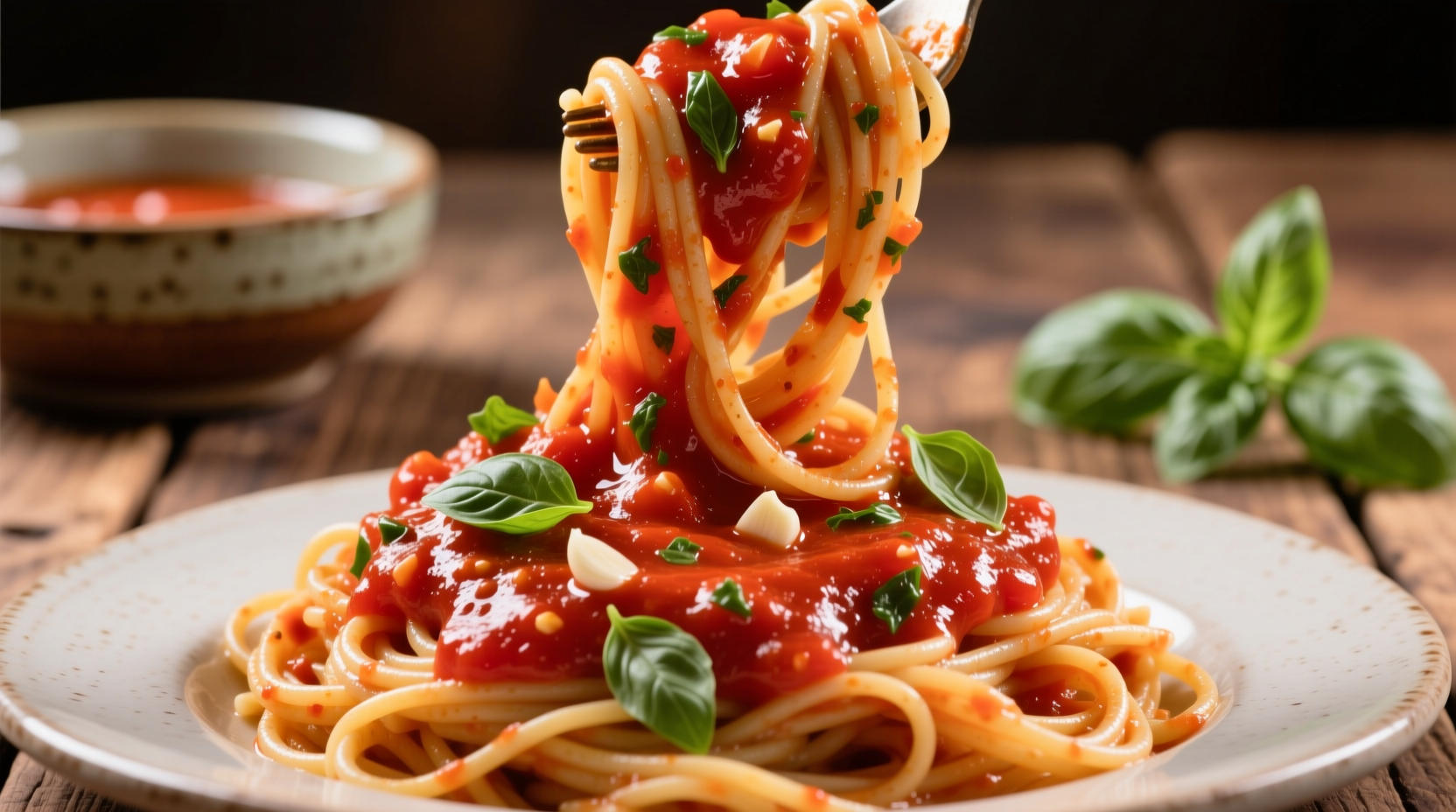When crafting the perfect Italian meal, understanding which pasta shapes complement tomato basil pasta sauce makes all the difference between an ordinary dish and an extraordinary one. This guide reveals exactly how to match your sauce with the ideal pasta form, plus professional techniques to elevate your cooking from everyday to exceptional.
Understanding Tomato Basil Sauce Characteristics
Tomato basil pasta sauce stands apart from other tomato-based sauces due to its fresh herb component and typically chunkier texture. Unlike smooth marinara or meat-heavy ragù, authentic tomato basil sauce features:
- Noticeable fresh basil leaf pieces (not just dried herb flavor)
- Moderate viscosity that clings without being overly thick
- Bright acidity balanced with natural tomato sweetness
- Visible vegetable matter from quality tomatoes
These characteristics directly influence which pasta shapes work best. The sauce's texture requires pasta with enough surface area and nooks to capture those precious basil flecks and tomato chunks.
Perfect Pasta Pairings: The Science Behind the Match
Professional chefs consistently choose specific pasta shapes for tomato basil sauce based on structural compatibility. The right pairing creates a harmonious balance where neither component overpowers the other.
| Pasta Shape | Compatibility | Why It Works |
|---|---|---|
| Penne | Excellent | Tube shape captures sauce inside and out; ridges hold chunky elements |
| Rigatoni | Excellent | Large diameter traps substantial sauce portions; substantial bite |
| Fusilli | Excellent | Spiral design cradles sauce; holds basil pieces effectively |
| Spaghetti | Good | Works with slightly smoother versions; requires proper twirling technique |
| Farfalle | Fair | Center pinch can trap sauce, but edges may not distribute evenly |
| Angel Hair | Poor | Too delicate; sauce overwhelms texture and flavor balance |
Historical Evolution of Sauce-Pasta Pairings
The tradition of matching specific sauces with particular pasta shapes evolved over centuries in Italian culinary practice. Understanding this timeline reveals why certain pairings work best:
- 16th-17th Century: When tomatoes first arrived in Italy from the Americas, they were considered ornamental. Early pasta sauces featured oil, cheese, and herbs.
- 18th Century: Tomatoes gradually gained acceptance, initially used in soups rather than with pasta. Basil remained a staple herb in coastal regions.
- 19th Century: The classic combination of tomatoes and basil with pasta emerged in Naples, with regional variations developing across Italy.
- Early 20th Century: Italian immigrants brought these traditions to America, where industrial pasta production standardized shapes.
- Modern Era: Food science has validated these traditional pairings through understanding surface area, sauce adhesion, and flavor distribution principles.
This historical context explains why certain pasta shapes naturally complement tomato basil sauce—they evolved together through centuries of culinary refinement.

Contextual Applications: Where Each Pairing Shines
While penne and rigatoni work universally well with tomato basil sauce, specific contexts call for particular pairings:
- Weeknight Family Meals: Rigatoni's substantial size holds up well to reheating and appeals to children with its "tunnel" shape that "hides" sauce inside.
- Elegant Dinner Parties: Fusilli's spiral shape presents beautifully on white plates, showcasing the vibrant red sauce and green basil flecks.
- Meal Prep Situations: Penne maintains its integrity better than more delicate shapes when stored and reheated.
- Adding Proteins: When incorporating meatballs or sausage, rigatoni's larger interior space accommodates these additions without overwhelming the pasta-to-sauce ratio.
Understanding these contextual boundaries prevents mismatched pairings that compromise your culinary results.
Professional Techniques for Maximum Flavor
Italian culinary experts employ specific methods to maximize the potential of tomato basil pasta sauce:
The Finishing Technique
Never pour sauce over plain cooked pasta. Instead:
- Reserve ½ cup pasta cooking water before draining
- Add pasta directly to sauce in the cooking pan
- Add splashes of starchy water while tossing for 60-90 seconds
- Finish with fresh basil and high-quality olive oil off-heat
This emulsification process creates a cohesive dish where sauce and pasta become one, rather than separate components.
Temperature Matters
Serve immediately after finishing. Tomato basil sauce undergoes flavor degradation when held at improper temperatures:
- Ideal serving temperature: 140-150°F (60-65°C)
- Above 160°F (71°C): Basil flavor diminishes rapidly
- Below 120°F (49°C): Oil separates from sauce
Common Mistakes That Ruin Tomato Basil Sauce
Even with perfect pasta pairing, these errors compromise results:
- Adding oil to pasta water: Creates a barrier that prevents sauce adhesion
- Overcooking pasta: Results in mushy texture that can't properly hold sauce
- Using dried basil instead of fresh: Dried basil has completely different flavor compounds
- Adding cheese to tomato-basil sauce: Traditional preparation omits cheese as it competes with basil's delicate flavor
- Heating sauce separately then pouring over pasta: Prevents proper emulsification
Expanding Beyond Pasta: Creative Uses
Tomato basil sauce's versatility extends far beyond traditional pasta applications:
- Pizza Alternative: Use as a sophisticated pizza base instead of plain tomato sauce
- Egg Dishes: Create shakshuka-style poached eggs in warmed sauce
- Protein Enhancer: Simmer chicken breasts or fish fillets directly in the sauce
- Grain Bowls: Serve over farro or quinoa for a hearty vegetarian meal
- Appetizers: Use as a dipping sauce for artisan bread or vegetable crudités
These applications demonstrate why understanding tomato basil pasta sauce compatibility principles benefits your entire culinary repertoire.











 浙公网安备
33010002000092号
浙公网安备
33010002000092号 浙B2-20120091-4
浙B2-20120091-4